Greetings, warriors of Jerusalem!
INJ2 by Team Century will be a historically accurate mod. We hope our players can enjoy the game as well as experience the immersive living history of the 12th century on Bannerlord platform. In this devblog, we will briefly describe the history of the Eastern Roman Empire, helping you to get familiar with the background story of this faction.
Note: This blog is based on historical settings; all the storylines are not fictitious. If there is any mistake, please tell us in the comment section.
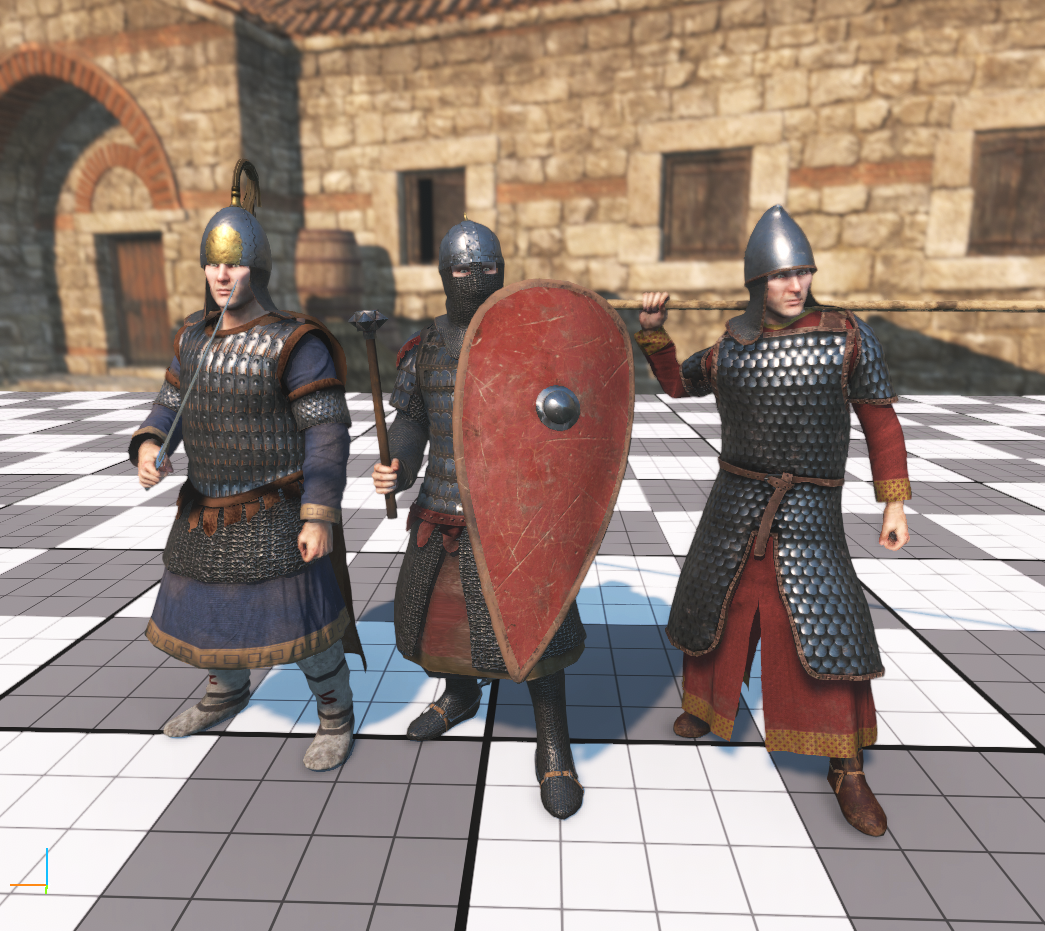
Elite calvary in the 12th century, mixed with Byzantine and West European style of gears in order to suit the combat environment at the time
From left to right: Hellenic Heavy Calvary, Elite Heavy Calvary, Latinic Heavy Calvary
The Eastern Roman Empire, which was the Oriental part of Imperium Romanum from the past. The capital city of Constantinople built up on ancient city of Byzantium, which makes historians from the later period called them by the name of the Byzantine Empire.
The reconquest of Justinian I in the 6th century did not end well. Constant war and plague had brought chaos and turmoil to the empire. In A.D. 613, the Sassanid Empire invaded Syria, captured Jerusalem and took away the True Cross; in A.D. 630, Heraclius I defeated the Persians and reclaimed the True Cross back to the Holy City. However, Arabs rose up from the desert. They crushed the imperial army in the Battle of Yarmouk in A.D. 636. Since then, the empire had lost its realm in Egypt, Syria and the Holy City with almost no hope to reclaim them.
Fortunately, the empire had survived from Arabic conquest and founded the Themes system to accumulate their force. During the Macedonian dynasty (A.D. 856-1056), the Romans were able to strike towards the Arabic faction in Syria under the rule of Nikephoros II Phokas and John I Tzimiskes. But after the death of Basil II in A.D. 1025, the empire was in succession crisis again, and was weakened by the struggle between bureaucratic and military nobilities internally. The Themes system as military base of the empire, fell apart by landlords who merged the land from Themes peasants, which caused significant financial crisis and inflation for the central government.
Territory of the Eastern Roman Empire in A.D. 1025
Simultaneously, the empire had to face new enemies apart from its falling strength — the Seljuks and Normans, who were the major threats in Asia Minor and Italy. In such instance, Alexios I Komnenos had solved these problems by his agile political methods and established the foundation for a new system.
Alexios I contributed a lot for the restoration of the Eastern Roman Empire. He utilised diplomatic strategy against the attacks from Normans, Pechenegs and Seljuks. The Romans allied with Venetians and bribed Henry IV, the Holy Roman Emperor against Robert Guiscard who led the Norman invasion. In A.D. 1091, Alexios allied with Cumans and eliminated a group of Pecheneg invaders. Later on, he asked a Crusade which helped him to claim back the western part of Asia Minor. In such instance, the border crisis was solved smoothly.
In terms of financial and military problems, Alexios managed to stablize the monetary system; abolished Solidus/Nomisma and manufacture new gold coin called Hyperpyron, which was also a way to plunder the wealth for the treasury. Meanwhile, he rebuilt defence system and hired loads of foreign mercenaries, which had become a major military feature during the rule of Komnenos dynasty.
However, the ways for Alexios I against foreign rivals and reinforce the empire also caused other troubles. For instance, granting privilege towards Venetians and calling for Crusade provided a dramatically good opportunity for Latins to expand their influence; which became a reason for them to be able to intervene the imperial politics.
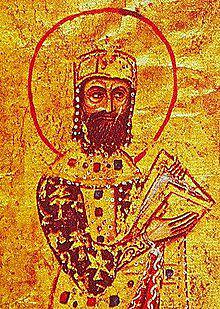
Alexios I
Komnenos dynasty was in its peak under the rule of John II Komnenos and Manuel I Komnenos. John II won several battles in Asia Minor and reclaimed cities and fortresses which were controlled by Seljuks. The path to Cilicia and Antioch was cleared, and John II was also known as the Sieger. At such point, John II and Manuel I pushed further and conquered Antioch in A.D. 1159 and A.D. 1173; accepted vassalage from Crusader states, and organised alliance to attack Syria against Islamic factions. The imperial authority expanded in the heart of the Holy Land again. Manuel I also sent expedition forces to Italy and Egypt, reclaimed the imperial reputation in the Mediterranean. In A.D. 1176, Manuel launched a massive campaign against Rum Sultanate towards the capital of Konya, aiming to hunt down Seljuks in Anatolia once for all. But the imperial army was ambushed in Myriokephalon. Manuel was very depressed as he lost most of the siege-works, and forced to withdraw his troops.
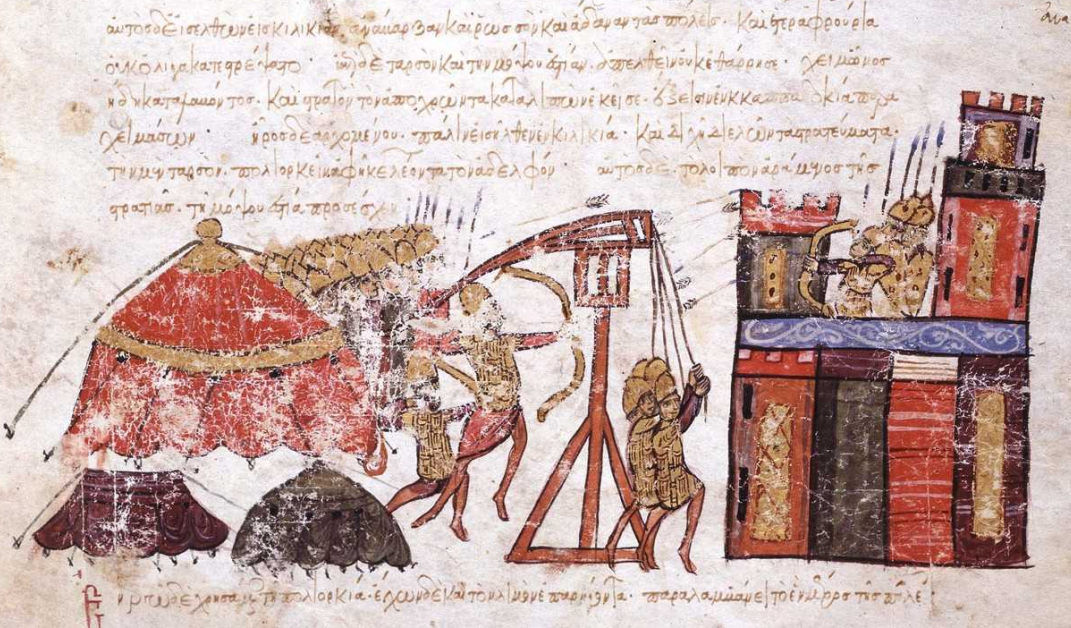
Codex Græcus Matritensis Ioannis Skyllitzes, manuscript in Italy
Presented the siege scene of the Eastern Roman Empire
In Balkans, John II eliminated most of the Pecheneg invaders in the Battle of Beroia (A.D. 1122). He also married with Irene of Hungary, created an excellent excuse for him and his son to intervene Hungarian politics and succession to the throne. They managed to defeat Hungarian army serval times, stabilising their suzerainty to Serbia. Manuel I also tried to raise the prince of Hungary as his own succession, who later became Béla III to unite Hungary, but the plan failed as his wife gave birth to his own son. In A.D. 1168, most part of Eastern Adriatic coastline, including Croatia, Bosnia and Dalmatia were controlled by the empire.
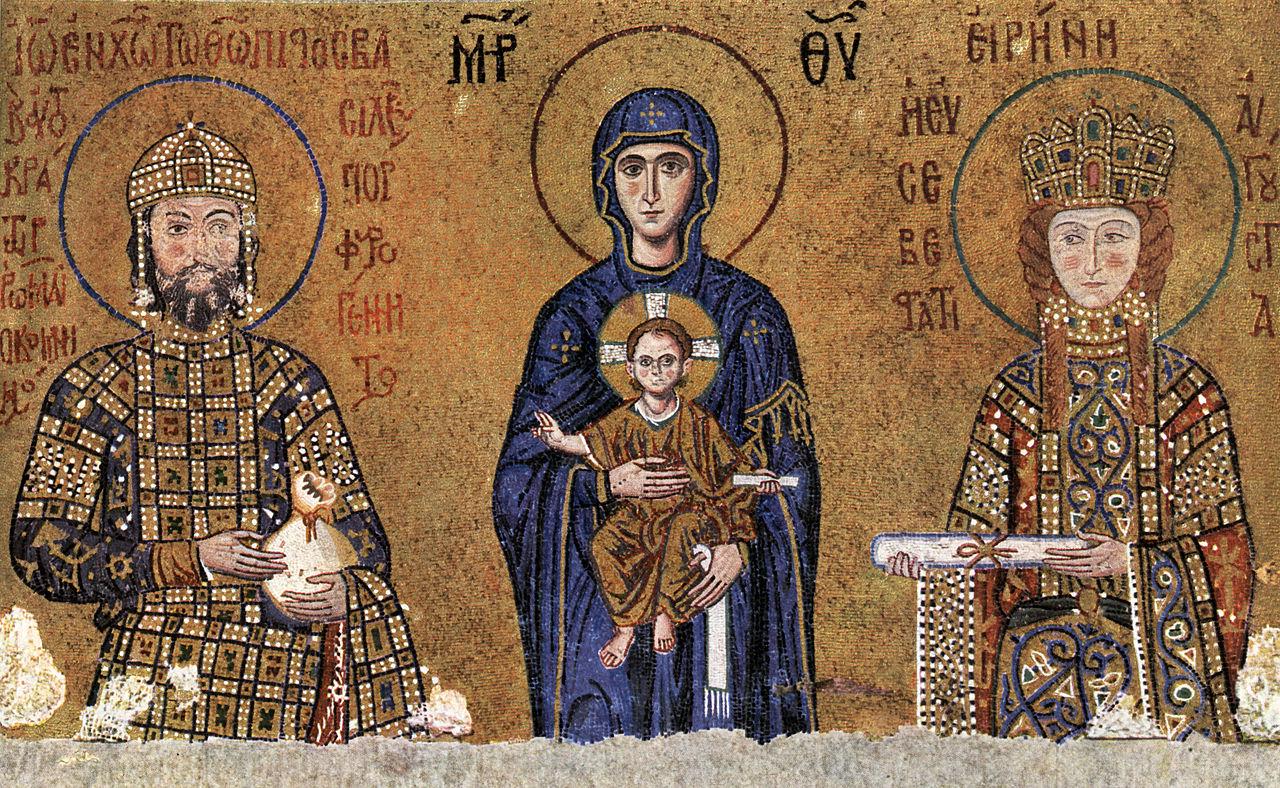
John II and Irene of Hungary (mosaic in Hagia Sophia)
The 12th century was a gold age for Western European nation-states in social and economic terms. It had become an important affair for the Romans to manage the relationship with the Latins. To deal with the Kingdom of Sicily, John started to seek alliance with the Germans and arranged royal marriage between Manuel and Bertha of Sulzbach, aunt of Conrad III. For controlling Crusader states, Manuel married Maria of Antioch after his first wife passed away. Despite the succession of the new Holy Roman Emperor Frederick I made the relation worse, Manuel also held a royal marriage between his son Alexios and the princess of France, daughter of Louis VII. In such instance, royal marriage has become an important method for imperial diplomacy.
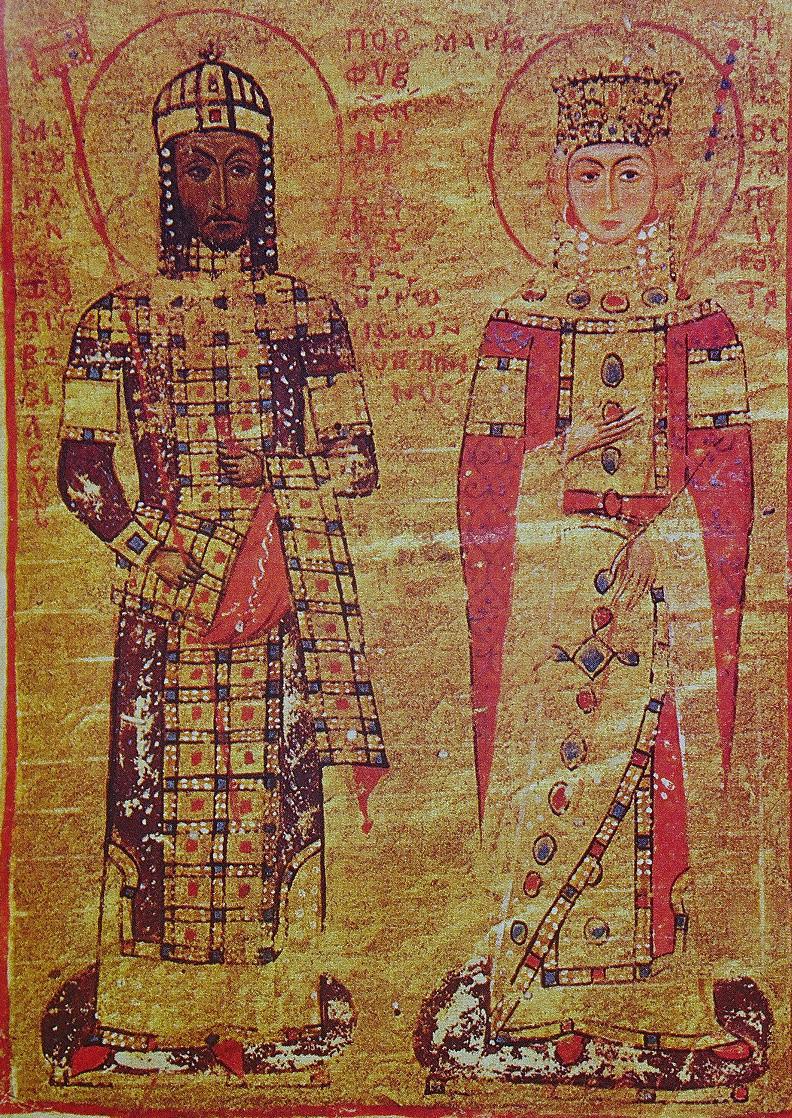
Manuel I and Maria of Antioch
Trade privilege played a significant role between the empire and the maritime republics of Italian Peninsula. The trade privilege started under Alexios I's rule, he granted such privilege towards the Venetians when they managed to help the basileus defeat Norman invaders in A.D. 1082. Alexios also granted the Pisans trade privilege in A.D. 1111. John II tried to get rid of the influence from the Venetians, but he had to handed out privilege again under the threat of Venetian fleets in A.D. 1126, and he also continued to grant privilege to the Pisans to balance with the Venetians in A.D. 1136.
The infiltration of Latins in imperial politics and economics has become a significant cause of conflict for the future. The hatred towards Latins among Greeks was growing. In order to destroy Venetian faction domestically, Manuel allied with Pisa and Genoa in A.D. 1169, and arrested all domestic Venetians, nationalised all goods and ships in A.D. 1171, the relationship between Venice and the empire was worsened. After the death of Manuel I, the empire was isolated in diplomatic term.
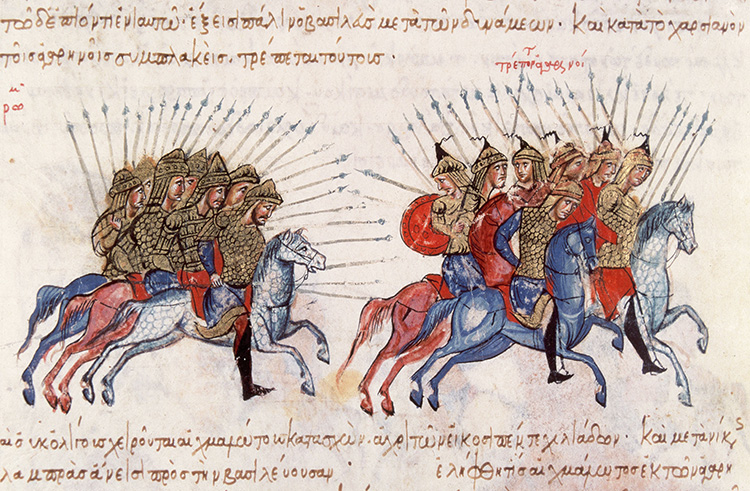
Codex Græcus Matritensis Ioannis Skyllitzes, manuscript in Italy,
Presented the style of imperial calvary in the 12th century, which were equipped with scale and lamellar armour
The power struggle during the late Komnenos dynasty was represented as conflict between Greeks and Latins. After the death of Manuel I, the central government was under controlled by empress dowager Maria of Antioch who's of Latin origin and her followers. Greeks, especially the citizens of Constantinople, hated Latins, which led to Andronikos I Komnenos' control of Constantinople and his capture of the throne.
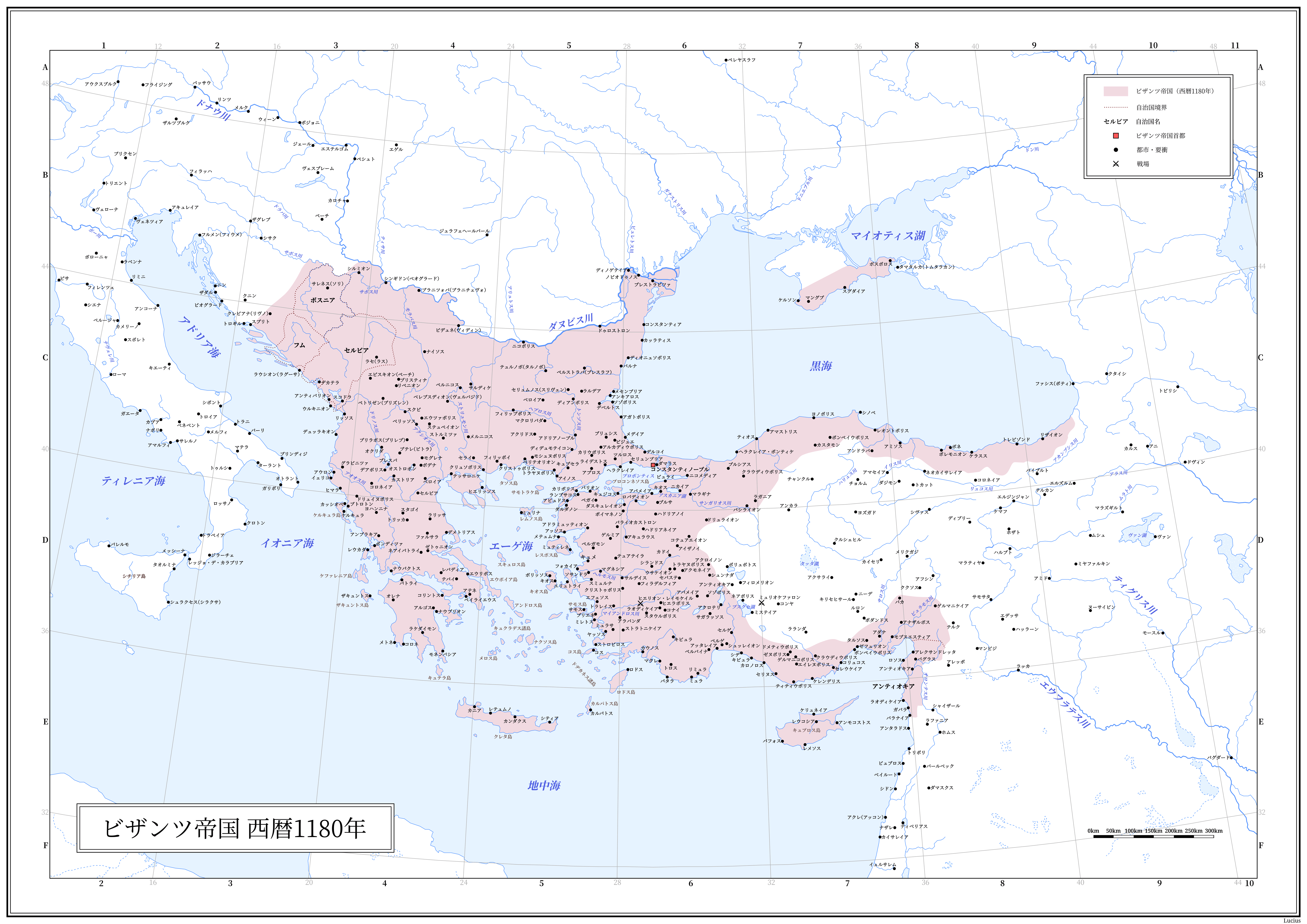
Territory of the Eastern Roman Empire in A.D. 1180
In A.D. 1182, the outbreak of conflict between Greeks and Latins has deteriorated into a massacre; Andronikos I who seize the power and forced the young emperor to execute the empress dowager Maria. Andronikos I started his reign of terror, executed or blinded his opponents and enemies. He also married his nephew's widow who has been killed, she is Agnes of France and was only 12 years old at the time; while Andronikos I was already at the age of 65. When the empire was still isolated in the West, Andronikos I decided to allied with Saladin. In A.D. 1185, the Cicilian invader sacked the second large city Thessaloniki. Issac II Angelos incite citizens of Constantinople to rebel against Andronikos I, Andronikos I didn't manage to escape and was torn apart by the angry mob.
Issac II Angelos became the emperor in such chaotic situations. He wasn't born in great family, because his grand father Constantine Angelos married with Alexios I's younger daughter Theodora; he became a member of the royal family. Issac II was the youngest son among his five brothers but wasn't outstanding among them. While he was hunted by Andronikos I and fled to Hagia Sophia, he organised a massive riot by presenting a speech towards the angry crowds. This event gave him an opportunity to take the throne.

Portraits of the Eastern Roman Emperor
From left to right: Alexios II, Andronikos I, Issac II
Issac II did realise the crisis of Komnenos dynasty. Local noble factions continued to expand their power and become more and more autonomy, separate away from the control of the imperial government. The military power and control of provinces were mainly based on emperor's authority and charisma. But after the death of Manuel I, because of foreign influence, frequent power struggle and rule from the inexperienced young emperor; the royal authority is significant undermined and even a young member from lesser family like Issac II Angelos could claim the throne of the empire. The domestic nobilities, especially the Komnenos family, who had tight control of the local army, would claim their disobedience. Such as Isaac Komnenos who claim independence in Cyprus at A.D. 1184. On the matter of foreign politics, a series of incidents like Constantinople massacare and siege of Thessaloniki had become a huge conflict between Greeks and Latins.
After clearing the rival to the throne, Issac II appointed Alexios Branas as commander to deal with Norman invaders. Issac II also married Margaret of Hungary, hoping to improve the relationship with the Western world and stabilized northern borders. The Norman invaders raid the occupation region after easy victory and only been defeated by Alexios Branas in A.D. 1185. Issac II also granted huge amount of gold to the Sultanate of Rum and appeased the Seljuks in Anatolia for a short peace.
In order to raise troops and fill in the marriage expenditure, Issac II increased taxes. The outrage of citizens and nobles further accelerated the internal collapse of the empire. In Paristrion the people rose in revolt; the Bulgarian leaders, Theodor and Asen organised rebellion as they tried to stop exploit by negociating with Issac II, but Issac spurned their demand. Theodor, who was the elder one, became the new Tsar Peter IV. Bulgaria was resurrected again, and it has been called the Second Bulgarian Empire in later ages. It has been the nightmare of the Romans for centuries, where Bulgarians rose again.
The rebellion was later supressed by Issac II and Peter IV was pushed back to the northern bank of Danube. The basileus himself entered Peter IV's residence and took away the statue of Saint Demetrius. However, Issac II was worried about the domestic volatility and did not push further to eradicate the Bulgarian trouble, which buried a huge hidden danger in their backyard.
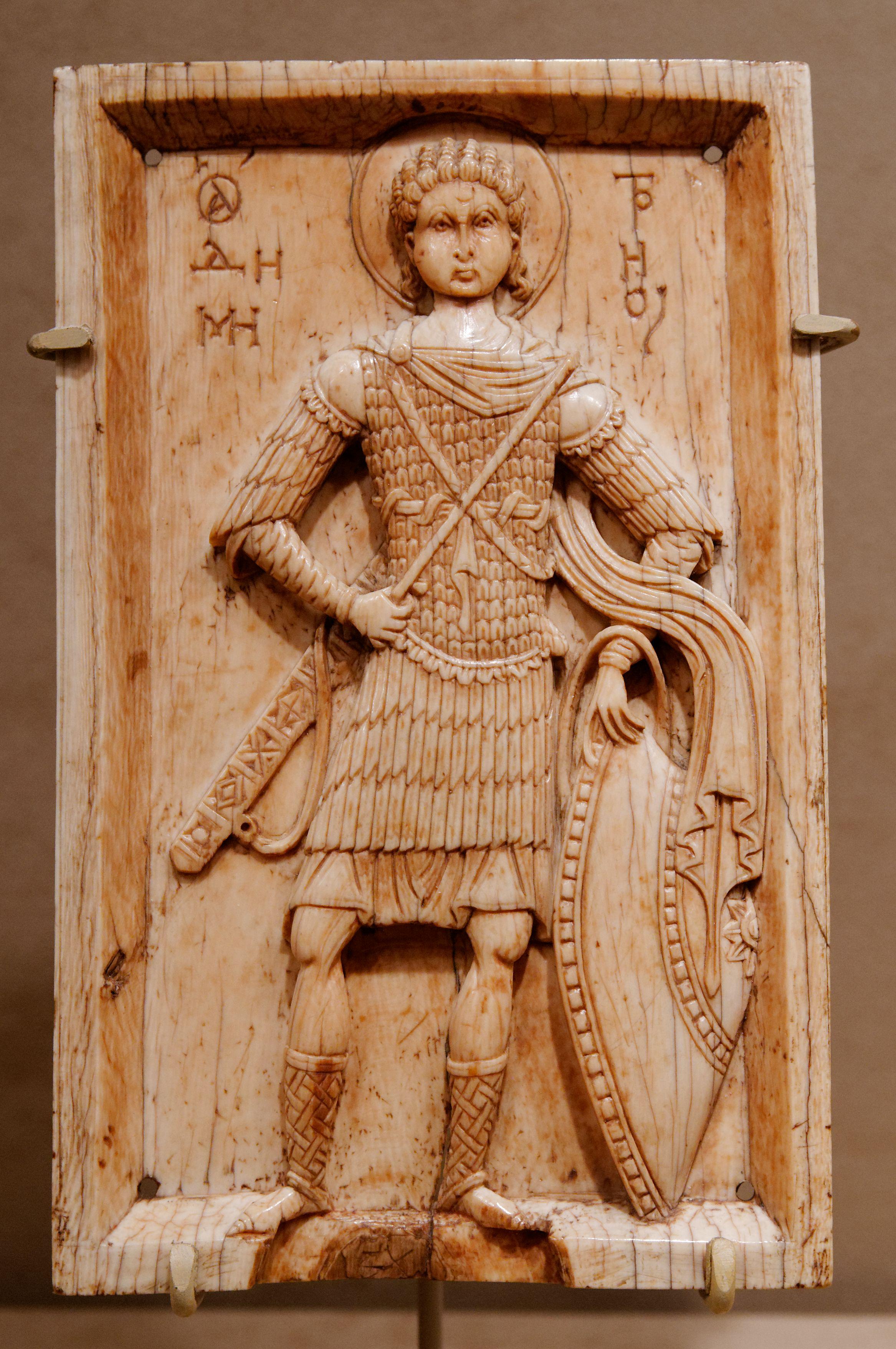
Statue of Saint Demetrius (Orthodox martyr)
Metropolitan Museum of Art, 10th century
It seems like the empire is having a break time from crisis. Issac II eliminated external and internal threat one by one, and the marriage with Margaret went well. But such good time wasn't lasting for long, as Peter and Asen allied with the local Cumans and Vlachs, invaded northern border again. While Serbia took such opportunity and claims their independence as well. Issac II sent his brother-in-law John Kantakouzenos to deal with the rebellion. John was a good general, but he was blinded by Andronikos I and didn't know how to fight in mountainous region. Thus the imperial army was defeated by the allied forces in the Balkan mountains. Issac II had to send Alexios Branas once again.
In A.D. 1187, Alexios Branas who had a mighty army on his hand took it as opportunity to claim himself as emperor in Adrianople; it was another significant challenge for Issac II. The best general of the empire will face Conrad of Montferrat, the brother-in-law of Issac to wage a life-and-death struggle under the wall of Constantinople.
The crumbling empire was in danger; the fate of Imperium Romanum is on your hand. Will you replace Issac II and restore the glory of the empire? Or to protect the existing dynasty to maintain order? The rudder of history will be on your hand!
If you would like to learn more about the history lead to the siege of the Constantinople in A.D. 1204; you can watch this great video by our friend: Eastern Roman History (ERH) on YouTube. The link to this video is down below: Youtube.com




Good stuff. in 1204 the Eastern romans broke their financial promise to the crusaders which led to the sack of Constantinople and the actual end of the empire.
Very good blog "Byzantine Empire" history is very long, rich and full of plots! They enjoyed very much blinding their ennemies and sometimes kill some latins, they were also allies of Saladin... Little note about the name of the empire, i think Eastern Roman Empire is a term that was used when there was the two part of Roman Empire (in fact i'm not even sure of that it's maybe historians that invented it like the name Byzantine Empire) in anyway people of the east part of Roman Empire (of greek culture) were naming themselves Roman and naming simply their empire "Roman Empire", Basileía Rhômaíôn in Greek Basileía= Empire/great kingdom Rhômaíôn= Roman.
PS: There is three pictures that don't load. Territory of estearn roman empire and the two last pictures.
Thank you, the loading error already been fixed by HoloNesan.
they were just called the Roman Empire,but for reports that the Scandinavians called them the 'kingdom of the Greeks', I cited the Scandinavians as a relevant group because they served as elite soldiers for the Byzantine empire
How can I download it??